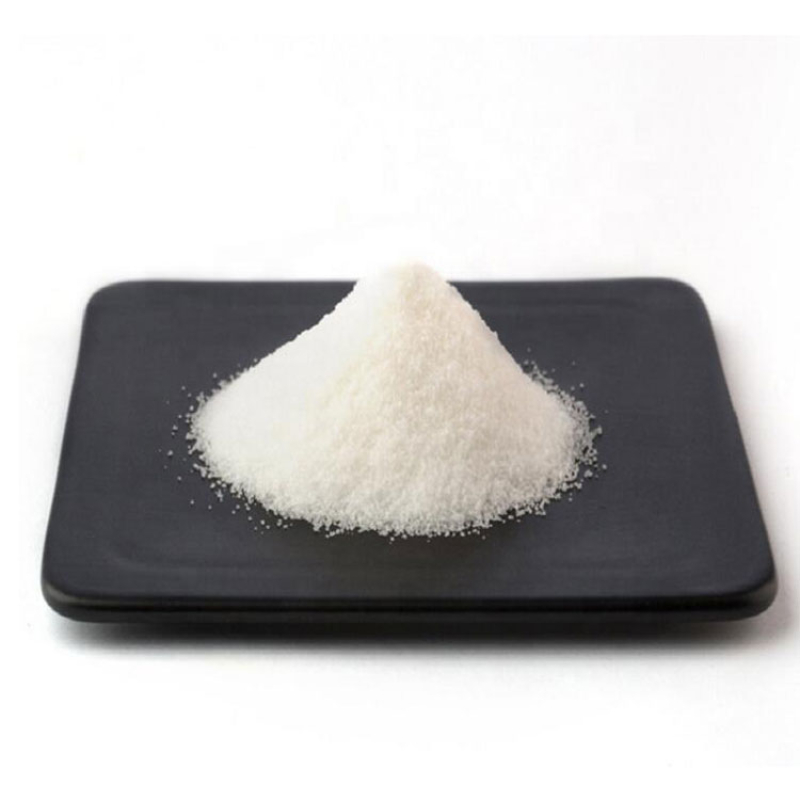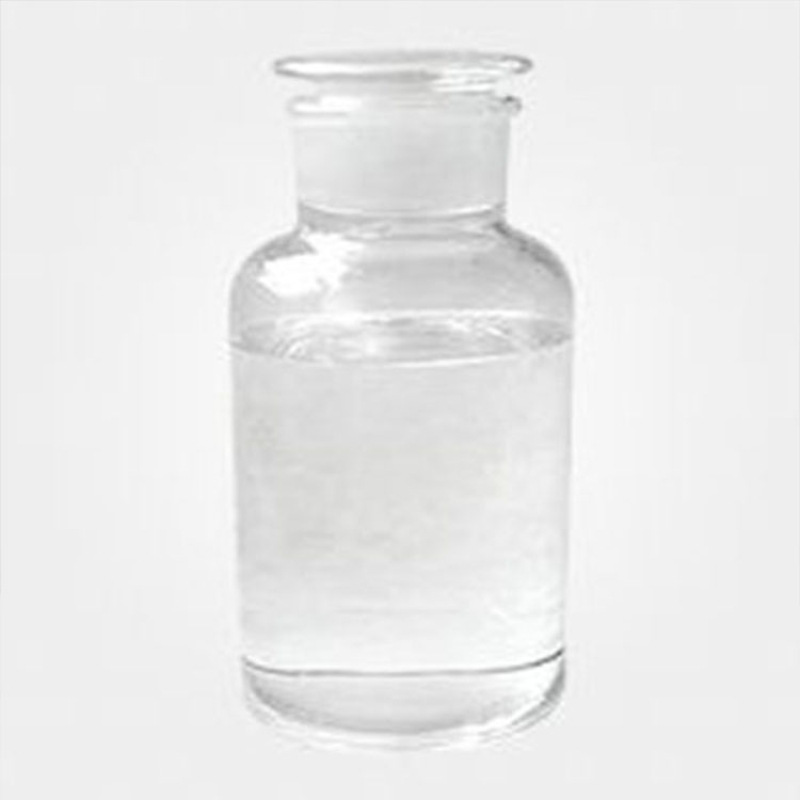Products Description of Cesium Iodide CAS#7789-17-5Cesium iodide, abbreviated as CsI, and inorganic halides including CsI(Tl) are widely used as scintillating media for high-energy particle and ionizing radiation detectors.
Contact Now
Products Description of Cesium carbonate99.9% CAS#534-17-8Cesium carbonate is an inorganic compound. It is a white solid at room temperature and pressure. It is very soluble in water and absorbs moisture quickly when placed in the air. The aqueous solution of cesium carbonate is strongly alkaline and can react with acid to produce the corresponding cesium salt and water, and release carbon dioxide. Cesium carbonate is easy to transform and can be used as a precursor of other cesium salts.
Contact Now
Products Description of Tetrabutylammonium iodide CAS#311-28-4Tetrabutylammonium iodide (TBAI) is a commonly used phase transfer catalyst that can increase the reaction rate or effectively promote a variety of chemical reactions. This reagent can be used as an iodine source to generate the iodide required for the reaction in situ, avoiding the use of some unstable and expensive iodides.
Contact Now
Products Description of Tetrabutylammonium Iodide COA#311-28-4Tetrabutylammonium iodide (TBAI) is a commonly used phase transfer catalyst that can increase the reaction rate or effectively promote a variety of chemical reactions. This reagent can be used as an iodine source to generate the iodide required for the reaction in situ, avoiding the use of some unstable and expensive iodides.
Contact Now
Products Description of Potassium iodide CAS#7681-11-0 Potassium iodide is an ionic compound, in which iodine ions can form dark yellow precipitated silver iodide with silver ions (decomposed by light and can be used to make high-speed photographic film), so silver nitrate can be used to test the presence of iodine ions. As a component of thyroid hormone, iodine is closely related to the basal metabolism of livestock and poultry, and participates in almost all metabolic processes.
Contact Now
Methyltriphenylphosphonium iodide Chemical PropertiesMelting point 183-185 °C(lit.)storage temp. Keep in dark place,Inert atmosphere,Room temperaturesolubility Chloroform (Slightly), Methanol (Slightly)form Powdercolor White to light yellowWater Solubility SOLUBLESensitive Light Sensitive & HygroscopicInChIInChI=1S/C19H18P.HI/c1-20(17-11-5-2-6-12-17,18-13-7-3-8-14-18)19-15-9-4-10-16-19;/h2-16H,1H3;1H/q+1;/p-1InChIKeyJNMIXMFEVJHFNY-UHFFFAOYSA-MSMILES[P+](C)(C1=CC=CC=C1)(C1=CC=CC=C1)C1=CC=CC=C1.[I-]CAS DataBase Reference2065-66-9(CAS DataBase Reference
Contact Now
Potassium Formate CAS#590-29-4Potassium formate is a useful chemical compound in the production of potassium metal and in the oil and gas industry, often in aqueous solution (alone, or mixed with cesium formate), to yield a high-density, environmentally-friendly brine that can be used a a heat transfer fluid.
Contact Now
Products Description of Iodomethane CAS#74-88-4Methyl iodide is a halogenated hydrocarbon with the molecular formula CH3I, MeI. It is a monoiodine substitute of methane. The boiling point is 42.4℃, the relative density is 2.279 (20/4℃), it is a volatile liquid with high density at room temperature, the dipole moment is 1.59D, and the refractive index is 1.5304 (20°C, D), 1.5293 (21°C, D). Methyl iodide is miscible with common organic solvents, slightly soluble in water, soluble in ethanol and ether. The pure product is colorless and has a special odor.
Contact Now
Products Description of Thiourea CAS#62-56-6Thiourea, English name: Thiourea, white bright bitter crystal, soluble in cold water, ethanol, slightly soluble in ether, easily deliquescent in the air, and transforms into ammonium thiocyanate at 150°C. It has reducing properties and can reduce free iodine to iodide ions. Thiourea is highly reactive and is used to prepare various compounds.
Contact Now
Products Description of Dicyandiamide CAS#461-58-5Dicyandiamide, abbreviated as DICY or DCD. It is an organic substance with the chemical formula C2H4N4. It is a dimer of cyanamide and a cyano derivative of guanidine. Chemical formula C2H4N4. White crystalline powder. Soluble in water, alcohol, ethylene glycol and dimethylformamide, almost insoluble in ether and benzene.
Contact Now
Products Description of Dipentaerythritol hexaacrylate CAS#29570-58-9White powderDipentaerythritol hexaacrylate Chemical PropertiesBoiling point 640.7±55.0 °C(Predicted)density 1.184±0.06 g/cm3(Predicted)Fp 266 °Cstorage temp. Sealed in dry,Room Temperatureform Liquidcolor Colorless to Light yellow to Light orange clear liquidEPA Substance Registry SystemDipentaerythritol hexaacrylate (29570-58-9)Factory and Equipment ShowFast delivery timeInventory 2-3 working days New production 7-10 working days
Contact Now
Products Description of 4'-Chloroacetophenone CAS#99-91-2Chloroacetophenone is an organic compound with the molecular formula C8H7ClO. It is a white liquid at room temperature. Insoluble in water, soluble in organic solvents.
Contact Now
99%Citric acid CAS#77-92-9Product Description:Introducing our high-quality Citric Acid Powder, a versatile and essential component in various industries, with the chemical abstract service number CAS#77-92-9.
Contact Now
Products Description of p-Cymene CAS#99-87-64-isopropyltoluene is an organic compound with the chemical formula C10H14. It is a colorless and transparent liquid, insoluble in water, soluble in ethanol, ether, acetone, chloroform and other organic solvents. It is mainly used in organic synthesis and preparation of paint thinners.
Contact Now
Products Description of Eucalyptus oil CAS#8000-48-4Eucalyptus oil is one of the most commonly used essential oils. With the increasing popularity of candies and chewing gum, one of the main uses of eucalyptus oil is as a food additive. Synthetic fragrances have a refreshing and clean appeal.It has a great influence on the cosmetic industry (such as toothpaste and oral hygiene products) and other household cleaning products industry, as well as the fragrance of perfumes.
Contact Now
Products Description of Aminopyrazine CAS#5049-61-6Aminopyrazine is the matrix for the four-component synthesis of imidazolidinediones, an organic synthesis intermediate and a pharmaceutical intermediat.Aminopyrazine Chemical PropertiesMelting point 118-120 °C (lit.)Boiling point 167.6°C (rough estimate)density 1.1031 (rough estimate)refractive index 1.5200 (estimate)storage temp. Keep in dark place,Inert atmosphere,Room temperaturesolubility soluble in Methanolpka3.22±0.10(Predicted)form Crystalline Powdercolor Slightly yellow to beigeWater Solubil
Contact Now
Products Description of POLYIMIDE RESIN CAS#62929-02-6Yellow powderPOLYIMIDE RESIN Chemical PropertiesMelting point >300°Cdensity 1.2Fp >93°(199°F)form PowderSpecific Gravity1.2color YellowWater Solubility Insoluble in water.EPA Substance Registry System1,3-Isobenzofurandione, 5,5'-carbonylbis-, polymer with 1(or 3)-(4-aminophenyl)-2,3-dihydro-1,3,3(or 1,1,3)-trimethyl-1H-inden-5-amine (62929-02-6)Factory and Equipment ShowFast delivery timeInventory 2-3 working days New production 7-10 working days
Contact Now
Products Description of cocoyl glutamic acid CAS#210357-12-3Colorless transparent liquidFactory and Equipment ShowFast delivery timeInventory 2-3 working days New production 7-10 working days
Contact Now
Products Description of N,N'-Dimethylpiperazine CAS#106-58-1N,N'-dimethylpiperazine is a flammable liquid that is more flammable when exposed to open flames, high temperatures, and oxidants; combustion produces toxic nitrogen oxide fumesN,N'-Dimethylpiperazine Chemical PropertiesMelting point -1 °CBoiling point 131-132 °C750 mm Hg(lit.)density 0.844 g/mL at 25 °C(lit.)vapor pressure 20 hPa (20 °C)refractive index n20/D 1.4463(lit.)Fp 65 °Fstorage temp. Store below +30°C.solubility miscibleform Liqu
Contact Now
Products Description of Octadecanamide CAS#124-26-5Stearamide emulsion is a white emulsion. The product is non-toxic, non-polluting, non-hazardous and green and environmentally friendly.
Contact Now
Products Description of Icaridin CAS#119515-38-7Icaridin, also known as Picaridin, was invented by the German company Saltigo. It is a broad-spectrum repellent with good mosquito repellent effect and long protection time. It is considered to be safer and less toxic than DEET, non-irritating to the skin, and has a higher overall level. It is also rated as the most effective mosquito repellent besides DEET by the Centers for Disease Control and Prevention of the United States. It is currently recognized as the best mosquito repellent chemical in Europe and the United States.
Contact Now
Products Description of Amoxicillin CAS#26787-78-0Amoxicillin, also known as amoxicillin or anmercillin, is one of the most commonly used broad-spectrum β-lactam antibiotics of the penicillin class. It is a white powder with a half-life of about 61.3 minutes. It is stable under acidic conditions, with a gastrointestinal absorption rate of 90%. It has strong bactericidal effects and the ability to penetrate cell membranes. It is also one of the semi-synthetic penicillins that are currently widely used in clinical practice.
Contact Now
Products Description of Magnesium Acetate Tetrahydrate CAS#16674-78-5Colorless crystals, easily deliquescent.
Contact Now
Products Description of Hydrogenated castor oil CAS#8001-78-3Castor oil is flammable but not inflammable, almost insoluble but soluble in ethanol, slightly soluble in aliphatic hydrocarbons, and castor oil is slightly volatile, so be careful when storing it.
Contact Now



































